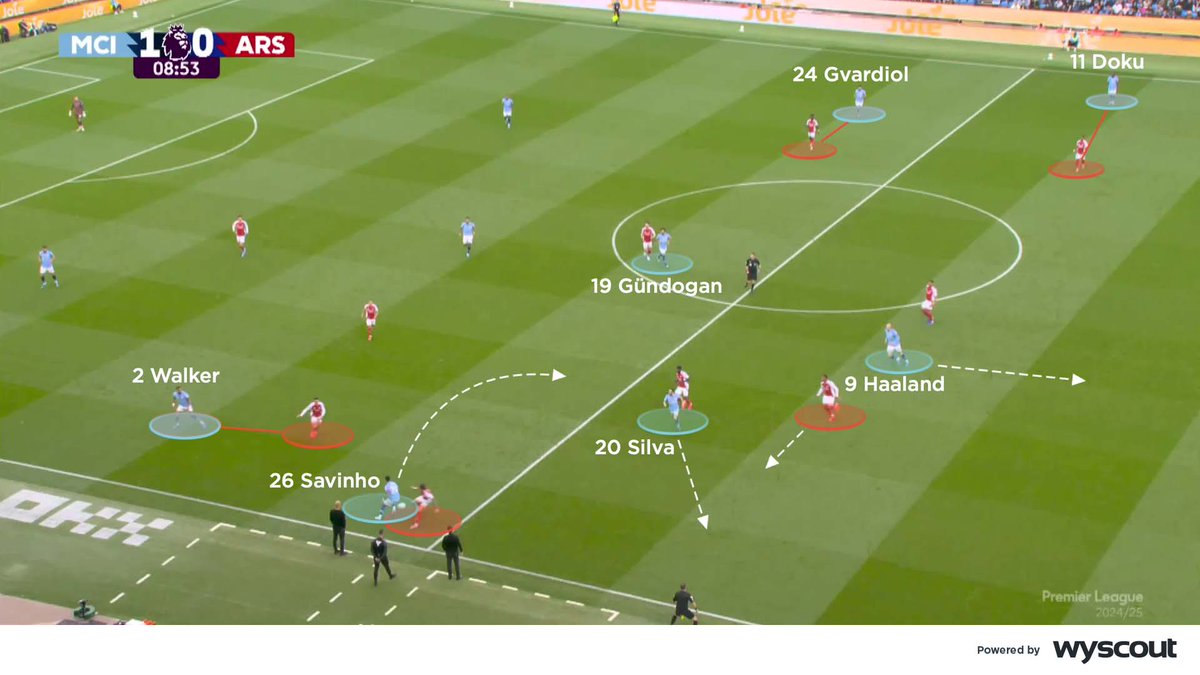Fresh analysis thread 🙌
How Diego @Simeone’s #AtleticoMadrid knocked Manchester United out of the Champions League through attacking in a 3-5-2 and left-sided counter-attacks... 🧐🧵
🔋 @Wyscout
#MUNATL • #UCL
How Diego @Simeone’s #AtleticoMadrid knocked Manchester United out of the Champions League through attacking in a 3-5-2 and left-sided counter-attacks... 🧐🧵
🔋 @Wyscout
#MUNATL • #UCL
United were set up in a 4-2-3-1, up against Atlético’s 5-3-2 defensive block. The hosts built around Atlético’s front two and progressed down the flanks. A strong spell in the first half came as a result of Ronaldo dropping out to combine between a full-back and winger... 🧐🧵 

When Ronaldo drifted out to the left, left-back Alex Telles was more aggressive with his positioning. He overlapped to support Jadon Sancho, who made direct runs in behind, especially after moving into the inside channel... 🧐🧵 

Despite United progressing forwards they lacked a presence in the penalty area. Even when their wide build-up managed to pull one of Atlético’s centre-backs across, creating significant gaps in the back line, United had little to offer in the way of movements in behind... 🧐🧵 

After their changes, the home side moved to a 4-4-2, with Cavani joining Ronaldo up front. Pogba and Matic made up the midfield two, with Sancho and Rashford supported by Telles and Dalot. Atlético dropped into a 5-4-1 block which further crowded the centre of the pitch... 🧐🧵 

To limit Atlético’s wide progress, United forced the ball out to the away side’s wing-back, locked the ball along the touchline, and covered the passing options back inside. To begin with, at least, they did this very well... 🧐🧵 

Once Atlético pushed their wing-backs higher, United’s wider press was less effective, with significant gaps appearing between the hosts’ wingers and full-backs. The home side then defended with a 4-4-2 block, while Atlético attacked in a 3-5-2 shape... 🧐🧵 

Atleti had a 3v2 midfield overload, and this was enhanced when Griezmann dropped deep, which gave Maguire a decision to make: follow Griezmann into midfield or leave the Frenchman free to turn? He chose to stay tight, and in doing so left a gap in the right inside channel... 🧐🧵 

As Atlético used a low block for longer periods in the second half, they focused on incisive counter-attacks when they regained possession. They attempted to target the wide areas, with Félix and Griezmann dropping to connect into the overlapping wing-backs... 🧐🧵 

• • •
Missing some Tweet in this thread? You can try to
force a refresh
















